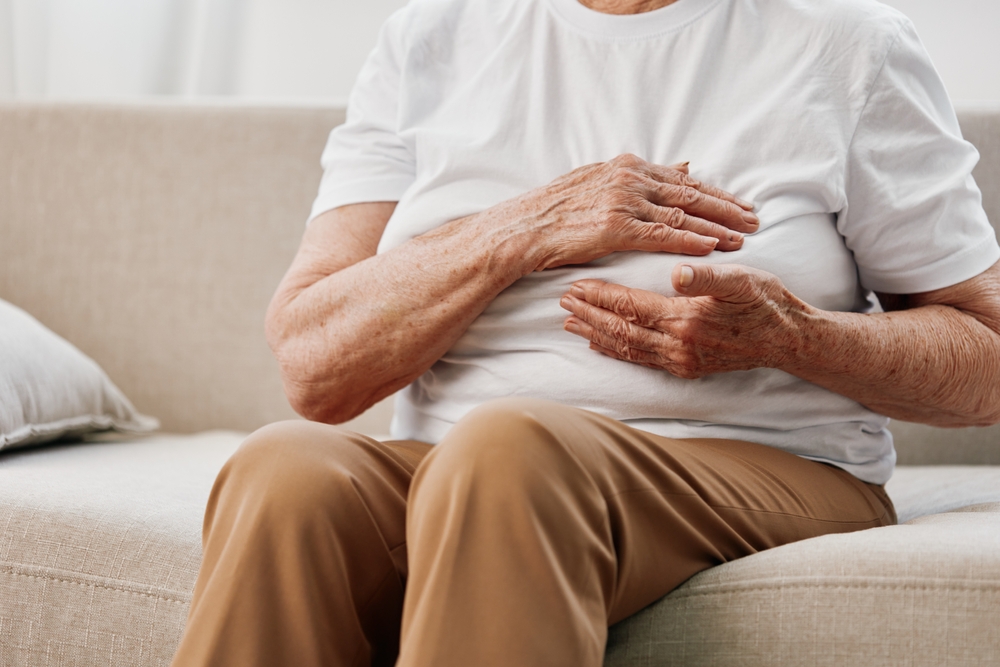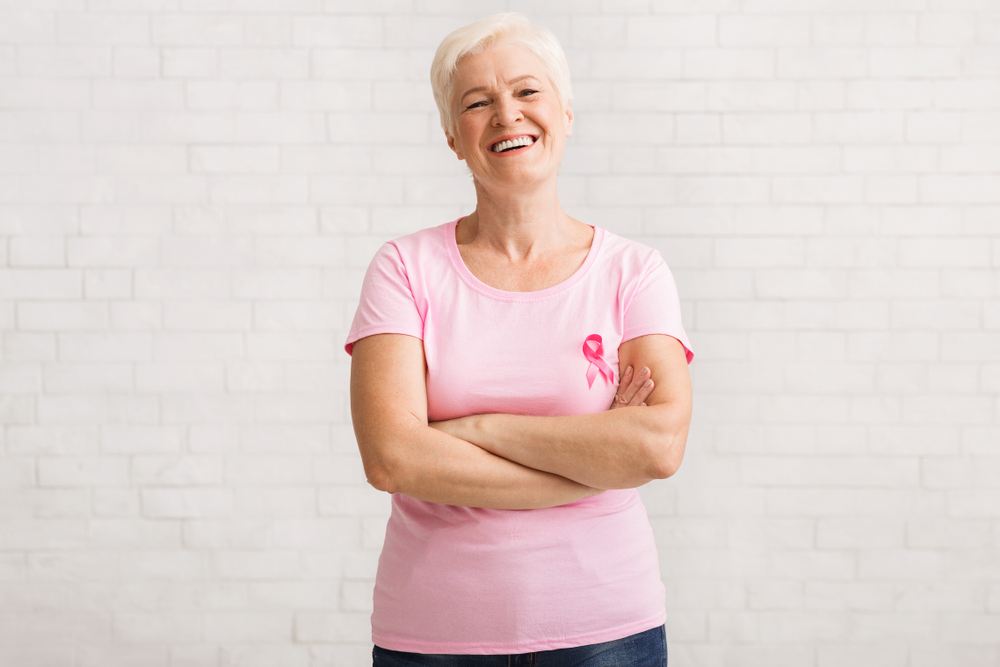Early Signs of Breast Cancer in Seniors
Category:

According to the American Cancer Society, 1 in 8 women in the U.S. will develop breast cancer in their lifetime. Only about 9% of all new breast cancer cases in the U.S. are diagnosed in women younger than 45 years old, meaning that as we age the risk of breast cancer only increases.
If breast cancer is caught in its earliest stages, survival rates can be as high as 99%. In this post, we’ll break down the early signs of breast cancer in seniors, answer common questions like “what causes breast pain in the elderly?” and “how common is breast cancer in your 70s?”
Breast Cancer After Age 65
Age is not the only risk factor to consider, however, breast cancer primarily impacts women who are middle-aged or older. The average age of U.S. women diagnosed with breast cancer is 62 years old, meaning that it’s extra important to keep an eye out for symptoms of breast cancer in older women.
Symptoms of Breast Cancer in Older Women
The challenging thing about identifying signs of breast cancer in seniors is that symptoms look different for everyone.
While there are many early signs of breast cancer in elderly women to look out for, the unfortunate truth is that many people may have no symptoms at all. This is why regular breast exams and trips to the doctor are so important to early detection.

What Are Early Signs of Breast Cancer in Seniors?
In this section we’ll outline the most common signs of breast cancer in older women and when you should get a doctor involved.
Developing New Lumps or Masses
The most common symptom of breast cancer is developing new bumps on your breasts, armpits, or collar bone that don’t go away.
Aging causes natural changes to your breast tissue, meaning that benign breast lumps after 70 can be a common occurrence, but the chance of a breast lump being cancerous is 3.5% for females in their 60s compared to a 0.5% chance for females in their 30s.
Lumps or masses will likely feel harder, denser, or otherwise distinct from the surrounding breast tissue, and may be painful. If you or a loved one notices a new breast lump or mass, it’s important to see a doctor for a breast exam as soon as possible.
Changes in Nipples
Another common sign of breast cancer is changes to the nipples. Common symptoms include nipple inversion and discharge (especially if it is bloody and/or spontaneous).
If skin is flaky, dry, or thickened around the nipple or areola it may be a sign of a form of breast cancer called Paget’s Disease, which is rare, but more common in older adults.
Any significant changes in the nipples should be accompanied by a breast exam with your doctor.
Breast pain or discomfort
Though uncommon, persistent breast pain may be a sign of undiagnosed breast cancer.
Breast pain can be a natural part of aging and hormone fluctuation and is generally not considered a common symptom of breast cancer.
However, unexplained or persistant pain should be discussed with a doctor to identify what is causing breast pain for your senior, especially if it comes alongside other symptoms.
Breast Swelling
Even if you aren’t experiencing pain or seeing new lumps or masses, breast swelling may be an early sign of breast cancer. If swelling persists, visit your doctor for a breast exam.
Download Our FREE Path to Care Guide
Signs of Metastatic Breast Cancer in Seniors
Metastatic breast cancer, also known as stage IV breast cancer, is cancer that has begun spreading to other parts of the body including the bones, lungs, brain, or liver. At this stage, cancer is considered extremely advanced, and though treatment may help control spread, there is no cure.
Symptoms of metastatic breast cancer in seniors will vary depending on the cancer’s location, but common symptoms may include:
- back, bone, or joint pain that does not go away
- difficulty urinating (either incontinence or not being able to go), which can be a sign that the cancer is pinching nerves in your back
- numbness or weakness anywhere in your body
- a constant dry cough
- shortness of breath or difficulty breathing
- chest pain
- loss of appetite
- abdominal bloating, pain, or tenderness
- constant nausea, vomiting, or weight loss
- jaundice (a yellow tinge to the skin and whites of your eyes)
- severe headaches
- vision problems (blurry vision, double vision, loss of vision)
- seizures
- loss of balance
- confusion
To learn more about our home care services, contact our caregiving team today at 1-800-GRISWOLD or find a Caregiver near you.
Subscribe
Date: 2024-09-17
Category:


